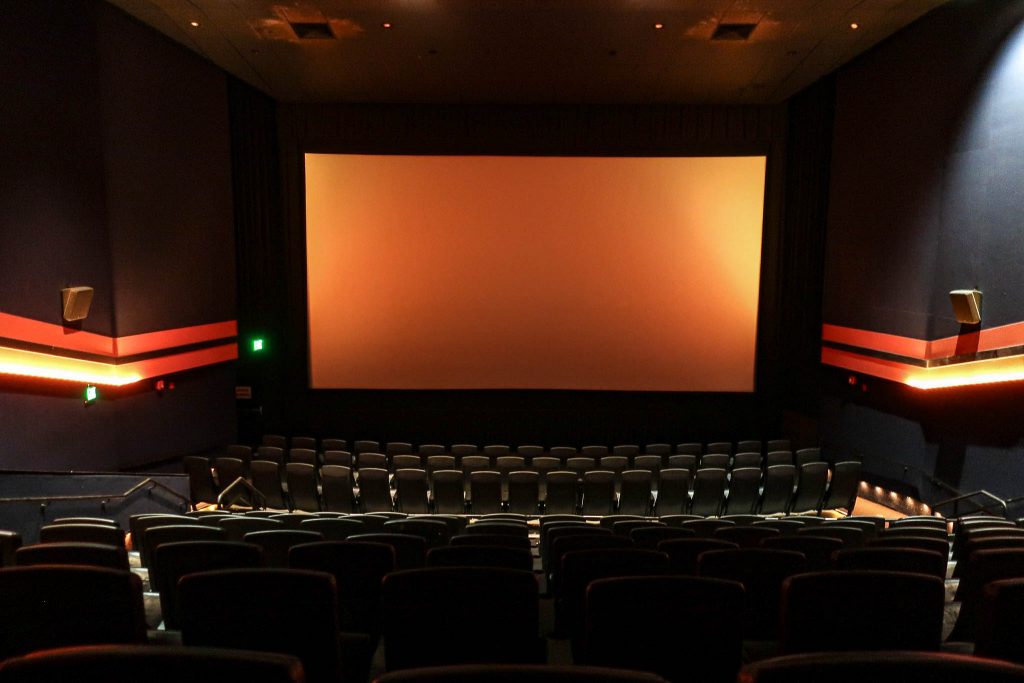
During the recent Time100 summit in New York, Netflix co-CEO Ted Sarandos shared his views on the movie theater model, suggesting that the idea of making movies for people to see in theaters is an “outdated concept.” He insisted that the film industry is “trapped” in wanting audiences to watch movies in theaters and should instead “adapt to…[how] audiences want to watch movies.” His insinuation, to nobody’s surprise, is that viewers would prefer to stream movies at home. This, however, makes the mistake of viewing the situation in extremes. Why put the audience into a box and assume that they want to watch movies in a certain way? Is that not a trap in itself? The idea should not be to predict whether or not audiences will want to watch movies in theaters, but to make them want to do so.
Many may argue that attracting audiences to theaters is no longer practical. They may be quick to point out losses endured by movie theaters during the first quarter of 2025, or how chains such as Regal have closed more than a handful of locations in recent years. However, cinema has always been a very unpredictable business; one never knows when it will boom and when it will drop. For example, many of Regal’s theater closings were part of its parent company Cineworld filing for bankruptcy due to the theatrical drought caused by the COVID-19 pandemic, but it soon successfully rebounded from this as people returned to theaters. Some of the closed theaters have even been reopened under new, independent ownership, indicating that the theater business is not going anywhere.
Even the CEO of AMC Entertainment Adam Aron recently dismissed any serious concerns about the future of theaters, calling the chain’s underwhelming first-quarter box office performance “a distorting reality that has already corrected itself.” He is, of course, referring to the recent spate of theatrical blockbusters spearheaded by “A Minecraft Movie” (despite not-so-great reviews) and more crucially, the unprecedented success of “Sinners,” which has performed at levels previously considered unthinkable for its genre. These two films tap into completely different target audiences, both of which evidently appreciate the value of the big-screen experience.
After all, no home entertainment system can live up to the pristine picture quality and booming, immersive surround sound that a movie theater provides, and these are only the beginning of the delights that theaters have to offer. When you sit in a theater and the lights turn off, all you see is what is on the screen. Your attention becomes so much more focused on the film as opposed to the myriad distractions that can come from watching at home. “Larger than life” becomes literal as you witness the images unfold on the massive screen in front of you.
Moreover, the experience becomes bigger than the movie alone. Imagine that you are taking your seat inside a packed theater, full of buzzing moviegoers in eager anticipation of what they are about to witness. For those two or three hours, you will be sharing the same emotions with dozens (if not hundreds) of people whom you have never met. When you laugh, you are joining the theater in an infectious chorus that only amplifies the fun. When you cry, the tears do not run down your cheeks alone; you silently share them with those sitting around you. When an unexpected twist hits, you hear gasps that make you realize how all of you are equally invested and in the same state of tension and vulnerability, as if you are all living through the same experience. When scenes hit close to home, you might find comfort in hearing or even joining vocal reactions from others who can relate to the same moments.
All of this has nothing to do with scale either. Whether watching a big production like “Sinners” or an indie coming-of-age film like “Dídi,” these are the kinds of moments that I have constantly had the fortune of experiencing in packed screenings. Plus, hearing how different people react to scenes gives so much more perspective than what you might have on your own. People might laugh at a joke you do not immediately catch, comment on cultural references that go over your head and more. It makes you a more active and engaged viewer and brings you closer to people, so when you join the audience to erupt into applause during the most gratifying moments, it is truly an experience like no other.
That feeling can never be matched by streaming. Of course, streaming does offer significant benefits; it is a convenient option that makes a wide range of films easily accessible from the comfort of one’s home. However, with the increasingly scattered distribution of films across various streaming services and growing inclusion of mid-movie advertisements, it is proving to be not too different from the days of cable TV, at least in terms of consumer cost. In fact, during the height of the pandemic, debates were rife about whether the rise of direct-to-streaming releases would lead to the end of theaters, as the former seemed like a more affordable, convenient and sustainable option at the time. However, cut to a few years later, and even films which were first commissioned as direct-to-streaming releases — such as Paramount’s “Smile” — have ultimately received wide theatrical releases in order to “maximize” profits. In other words, the audience that believes in the power of the theatrical experience continues to be much larger than skeptics might think.
Market dynamics and viewing patterns have certainly changed post-pandemic, but that does not mean that everyone has migrated to streaming, or that sold-out shows are a thing of the past as Sarandos claims. If that were the case, then we would not be seeing such a resurgence of re-releases. The most recent example would be “Star Wars: Episode III – Revenge of the Sith,” which re-released in April and made $42.2 million at the global box office in a single weekend. The fact that the 2005 film is easily available for streaming on Disney+ has clearly not stopped people from flocking to theaters for the community experience. One might argue that “Star Wars” is merely an exception since it is such an extremely beloved franchise. However, a similar feat was achieved by Christopher Nolan’s “Interstellar” upon its re-release in IMAX last December. Initially intended only as a one-week event, its run was extended in order to meet the massive demand for tickets which led to sold-out shows worldwide.
The message is clear: with the right movies, people will show up to theaters in droves. If anything, rather than writing theaters off as a thing of the past, the film industry may want to think about more ways to attract people to theaters. For one, Hollywood should consider incorporating intermissions, especially for very long films; this is a near-universal practice in India, for example. Having to sit for three hours at a single stretch can be a tough task that could lead even those who value an immersive experience to prefer the convenience of streaming, where they can pause at will to use the bathroom or grab a snack at any time. Including an intermission could allow viewers to enjoy similar conveniences without missing out on the joys of the theatrical experience.
At the end of the day, people will always crave a meaningful community experience. It is up to studio executives and producers to keep believing in this and support the kind of clutter-breaking stories that will compel audiences to feel that they are best experienced in a theater. After all, a great theatrical experience is nothing less than a celebration. It is a celebration of storytelling, community and the human spirit. Especially during such uncertain times, there is little that could be more valuable than that.


